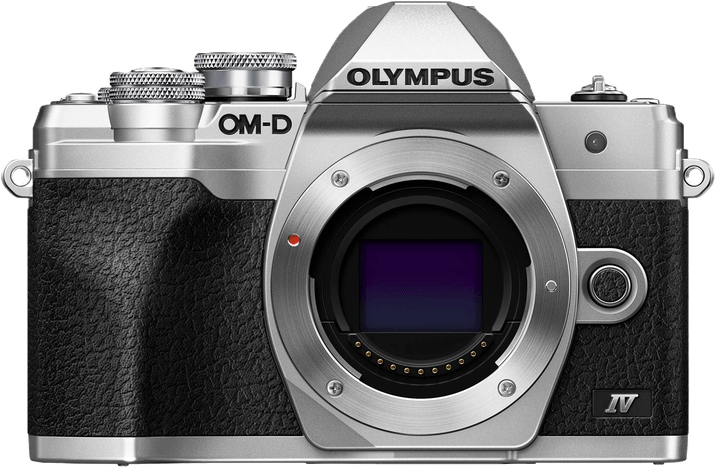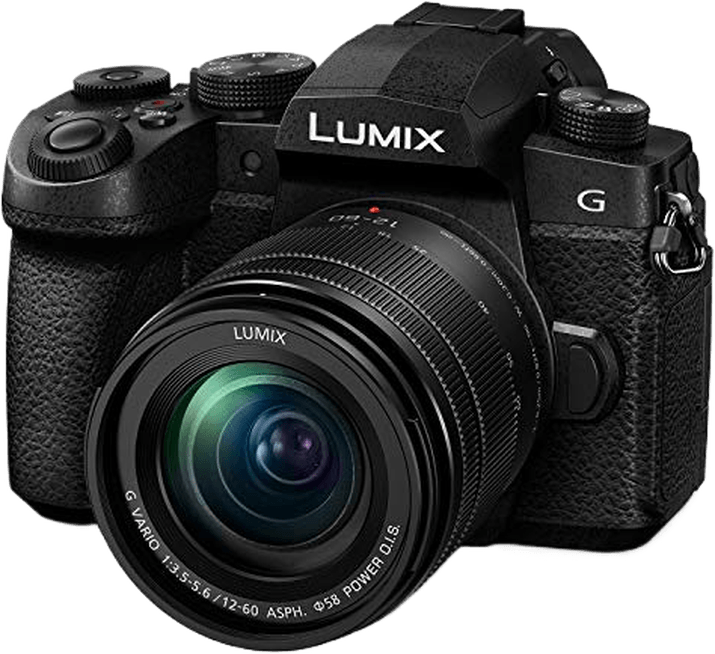Olympus OM-D E-M10 Mark IV vs Panasonic Lumix G95 / G90 Comparison
Olympus OM-D E-M10 Mark IV

Panasonic Lumix G95 / G90

The Panasonic Lumix G95/G90 edges out the Olympus OM-D E-M10 Mark IV with a score of 66/100 compared to the Olympus’s 63/100. Both cameras share similarities such as being mirrorless and having similar release years (2019 for Panasonic and 2020 for Olympus).
The Olympus OM-D E-M10 Mark IV has its advantages, including a lower launch price of $699 and a lighter weight of 383g (0.84lbs). It also has a smaller size at 122 x 84 x 49mm, making it more compact for travel and everyday use.
On the other hand, the Panasonic Lumix G95/G90 has a higher score, reflecting its superior performance. However, it comes with a heftier launch price of $1199 and a heavier weight of 536g (1.18lbs). Its larger size, 130 x 94 x 77mm, might make it less convenient for some users.
Taking these factors into account, the Panasonic Lumix G95/G90 is a better camera due to its higher score and performance, while the Olympus OM-D E-M10 Mark IV offers a more affordable and portable option.
Olympus OM-D E-M10 Mark IV vs Panasonic Lumix G95 / G90 Overview and Optics
The Olympus OM-D E-M10 Mark IV narrowly wins in the optics comparison, scoring 63/100, while the Panasonic Lumix G95 / G90 scores 62/100. Both cameras have several specs in common, including 20-megapixel CMOS sensors, Micro Four Thirds sensor size, Micro 4/3 lens mount, and image stabilization.
The Olympus OM-D E-M10 Mark IV performs better in a few areas. Its TruePic VIII processor is more advanced than the Venus Engine processor in the Panasonic Lumix G95 / G90. The shooting speed of the Olympus camera is 15, which is significantly faster than the Panasonic’s 9. Additionally, the Olympus camera has a slightly higher DXOMARK score for the sensor at 73, compared to the Panasonic’s 71.
Despite the Olympus camera’s overall win, the Panasonic Lumix G95 / G90 does have some advantages. It is important to note that the difference in the overall optics score is minimal, with only a one-point difference. This implies that the Panasonic camera still provides excellent image quality and performance.
Comparing the optics of the Olympus OM-D E-M10 Mark IV and the Panasonic Lumix G95 / G90 reveals that both cameras offer high-quality performance with only minor differences. The Olympus camera takes the lead with its faster shooting speed and marginally better sensor score. However, the Panasonic camera remains a strong competitor, delivering solid performance with its own set of features. Ultimately, the choice between these two cameras comes down to individual preferences and specific photography needs.
Olympus OM-D E-M10 Mark IV vs Panasonic Lumix G95 / G90 Video Performance
The Panasonic Lumix G95 / G90 wins the video capabilities comparison with a score of 91/100, while the Olympus OM-D E-M10 Mark IV receives a score of 83/100. Both cameras share some common specifications in this aspect. They both offer a maximum video resolution of 4K and dimensions of 3840 x 2160. Additionally, both cameras have built-in time-lapse functionality.
The Lumix G95 / G90 outperforms the OM-D E-M10 Mark IV in terms of maximum video frame rate, offering 120fps compared to the latter’s 60fps. This higher frame rate allows the G95 / G90 to produce smoother slow-motion footage, making it a better choice for videographers who need this feature.
On the other hand, the OM-D E-M10 Mark IV does not have any significant advantages in video capabilities over the Lumix G95 / G90. Both cameras have the same video resolution and dimensions, and the difference in scores is primarily due to the higher frame rate provided by the G95 / G90.
In comparing the video capabilities of these two cameras, the Panasonic Lumix G95 / G90 emerges as the better option due to its higher frame rate, which allows for smoother slow-motion footage. The Olympus OM-D E-M10 Mark IV, while still offering 4K video resolution and time-lapse functionality, does not provide any particular advantage over the G95 / G90 in this aspect. Therefore, for those prioritizing video performance, the Lumix G95 / G90 is the recommended choice.
Olympus OM-D E-M10 Mark IV vs Panasonic Lumix G95 / G90 Features and Benefits
The Panasonic Lumix G95 / G90 outperforms the Olympus OM-D E-M10 Mark IV with a feature score of 83/100, compared to the Olympus’ 70/100. Both cameras share several common specifications, such as a 3-inch screen size, touchscreen capability, flip screen, absence of GPS, and the presence of WIFI and Bluetooth connectivity.
The Lumix G95 / G90 surpasses the E-M10 Mark IV primarily in screen resolution, boasting 1,240,000 dots, as opposed to the Olympus’ 1,040,000 dots. This higher resolution provides better image clarity and detail when reviewing photos or navigating the camera’s menu.
Despite the lower feature score, the Olympus OM-D E-M10 Mark IV still holds some advantages. However, based on the provided specifications, no clear advantage emerges for the Olympus camera over the Panasonic Lumix G95 / G90.
Given the higher feature score of the Panasonic Lumix G95 / G90 and its superior screen resolution, it is the better choice between the two cameras. The Olympus OM-D E-M10 Mark IV may still be suitable for certain users depending on their specific needs, but the Lumix G95 / G90’s higher score reflects its overall superiority in features.
Olympus OM-D E-M10 Mark IV vs Panasonic Lumix G95 / G90 Storage and Battery
The Olympus OM-D E-M10 Mark IV outperforms the Panasonic Lumix G95/G90 in storage and battery with a score of 35/100 compared to 29/100. Both cameras share common specifications, including a single memory card slot and compatibility with SD, SDHC, and SDXC cards (UHS-II compatible). Additionally, both cameras offer USB charging capabilities.
The Olympus OM-D E-M10 Mark IV excels with a longer battery life of 360 shots, compared to the Panasonic Lumix G95/G90’s 290 shots. This advantage allows for more extended shooting sessions without the need to recharge or replace the battery.
However, the Panasonic Lumix G95/G90 does not surpass the Olympus OM-D E-M10 Mark IV in storage and battery performance, with both cameras having similar storage specifications.
Considering the storage and battery aspects, the Olympus OM-D E-M10 Mark IV is the preferable choice due to its longer battery life, allowing for more shots before needing a recharge. The Panasonic Lumix G95/G90 falls short in this comparison, but it does not lack in storage capabilities.
Olympus OM-D E-M10 Mark IV vs Panasonic Lumix G95 / G90 – Our Verdict
Are you still undecided about which camera is right for you? Have a look at these popular comparisons that feature the Olympus OM-D E-M10 Mark IV or the Panasonic Lumix G95 / G90:

